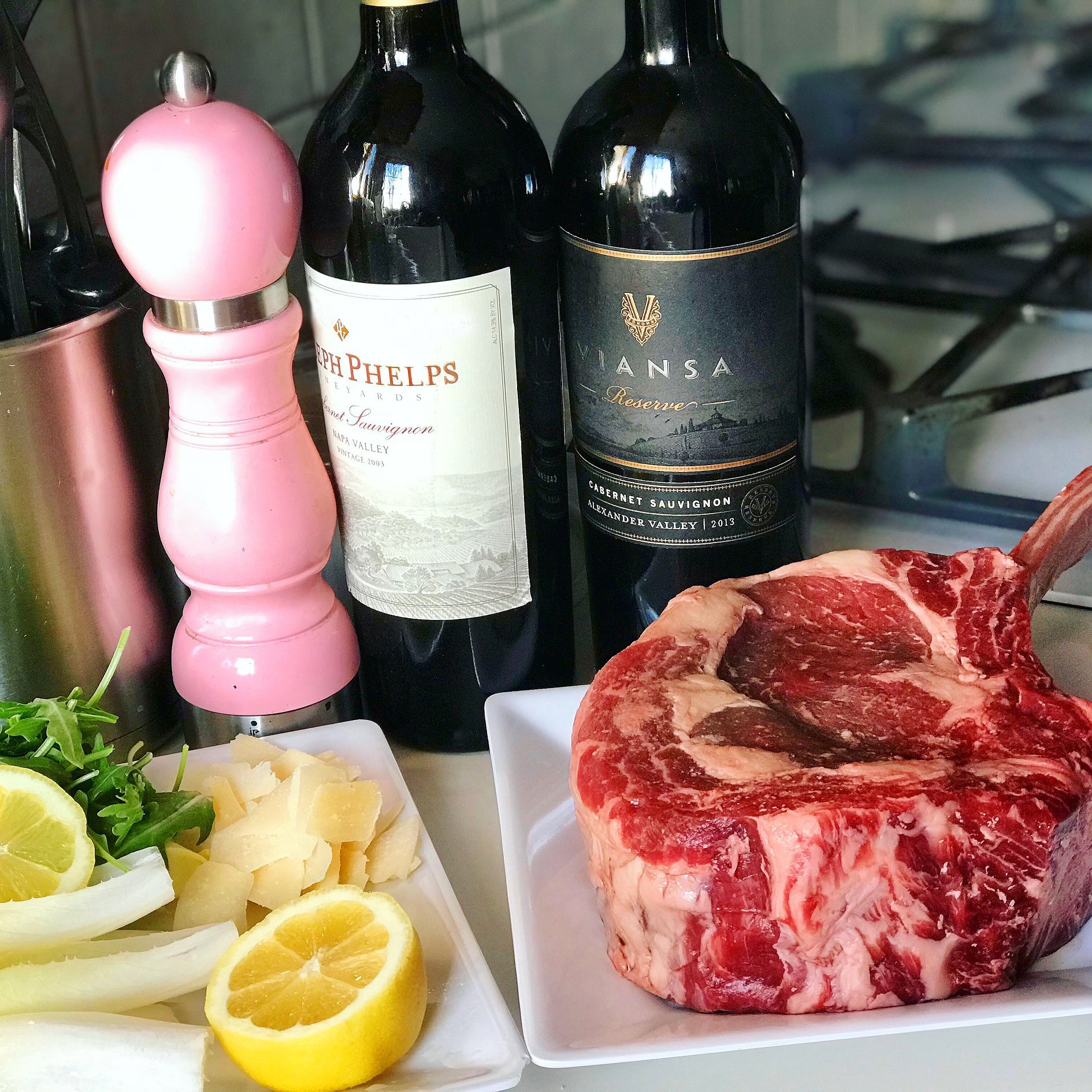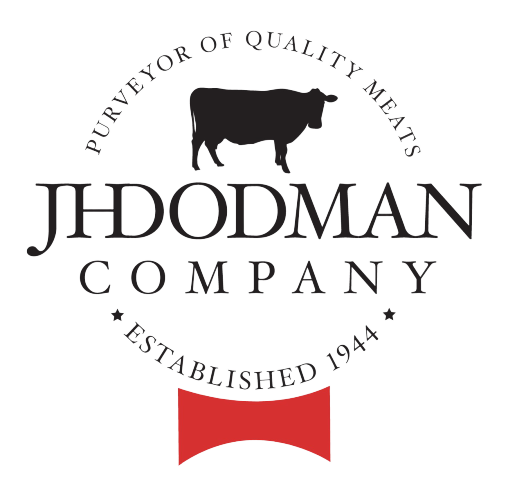
Cooking Tips
Here’s a few tips that we recommend for cooking your meat. Scroll down for cooking methods and a temperature chart.
For cuts such as steaks & chops, cook on high heat. You want to sear the meat, to the point that you can see a dark brown color.
For cuts such as roasts, go “low and slow.” You want to cook it longer at a lower temperature to develop your flavors and make it juicy and tender.
Season. Season. Season. One of the most common mistakes when cooking meat is under seasoning. Use seasonings from the store, or make your own! Some of our recommendations:
Season Pork with Black Pepper and Salt. Black pepper pairs with pork very well. If you want to add even more flavor, try adding some brown sugar or chili powder to your seasoning!
Season Beef with a variety of spices. Montreal Seasoning is a great addition to your beef. Garlic, Onion, Salt, Pepper, Coriander, Rosemary, Cayenne, and Sesame are also great herbs and spices that can be combined in different variations to create a delicious seasoning.
Chicken can be seasoned in many ways. Marinating chicken is a fantastic way to add flavor. BBQ sauce, Italian herbs, Teriyaki, and salt/pepper/cayenne are great ways to add a punch of flavor. Have fun with it!
Every try seasoning your bacon? Add a touch of black pepper and brown sugar to your bacon while its cooking for an explosion of deliciousness.
Lamb goes great with mint, thyme, salt, pepper, onion, garlic, and cinnamon, as well as many other flavors. Try serving it with a topping of horseradish mixed with cherry jam.
Keep it Juicy. Cook your meat with butter or olive oil, especially if it is a less fatty cut. Add some herbs, onion, lemon, or chipotle sauce to add a “splash” of flavor.
LET IT REST. Allowing meat to rest after cooking for at least 5 minutes gives the juices time to redistribute, helping the flavor and texture.
Cooking Methods
DIY Meat Smoker
For the smoker, you will need:
- A grill
- 3 Bricks (or something that can withstand the heat and hold up your cooking rack)
- Metal Drip Pan (Anything that can withstand heat and collect drippings)
- Cooking Rack (Anything that can withstand heat and hold your meat)
- Tinfoil
- Charcoal and Means to Ignite Charcoal
- Smoking Chips (available at most grocery stores)
1. Remove one side of your grill grates and line that side with tinfoil. On the other side, place your bricks in a circle, with the drip pan between them and the cooking rack on top.
2. Start your charcoal, either in a chimney or directly in the grill with charcoal starter fluid. While it heats up, soak 2-3 cups of your smoking chips in water. Wait for the coals to become white hot before proceeding.
3. Remove your chips from the water with a strainer. Let most of the water drip out, then place directly on top of the charcoal and close the grill top. Replenish the water with 2-3 cups of chips to soak.
4. When you can see smoke leaking from the grill, place your seasoned meat on the cooking rack and close the grill. (*See notes below for Pork Chop Seasoning Recipe)
5. Keep an eye on the temperature. 200-225 degrees is an ideal temperature. If it gets too hot, spread out the charcoal. If it gets to low, add more hot coals or simply turn on the burner under the meat on low.
6. Watch the amount of smoke being released. When it starts to diminish, add more of the water-soaked chips.
7. Don’t flip the meat while cooking. You may wish to rotate it on the rack for a more even cook. The meat is done when it reaches an ideal internal temperature. For Pork, that is 160 degrees for medium.
*Pork Chop Seasoning: 3 parts salt, 2 parts black pepper, 2 part brown sugar, 1 part smoked paprika, 1 part dried rosemary, ½ part cayenne
Pan Seared Strip Steak
Cooking a Pan Seared Strip Steak!
This is a “recipe” for cooking a Strip Steak. The reason that recipe is in quotes is that there are many ways to cook a steak, and these steps outline just one of the many methods. Very few precise measurement are used so that you can be creative and make it your own! These steps can be adapted for other cuts of steaks as well. Be creative, get cooking, and enjoy!
1. Heat up a pan on the stove on high. A Cast Iron skillet or a frying pan works best but work with what you’ve got! Lightly grease the pan with olive oil. You want a very thin coating of oil.
2. Season your strip steaks. Montreal Steak Seasoning is great, but there is lots of room for creativity here! To make your own seasoning, mix 3 parts Sea Salt, 2 parts Black Pepper, and 1 part each of a couple of other spices such as chipotle powder, dried rosemary, smoked paprika, cayenne etc.
3. Place your steaks into the hot pan. The reason that you are putting them into a very hot pan without much oil or butter is you are looking to get a hard sear on it. This means that the steak will take on a rich dark brown “crust”.
4. After about 3 minutes, when the bottom of the steak has taken on that dark brown color, flip the meat.
5. After flipping, add about two tablespoons of butter. If you have it, also add a couple cloves of crushed garlic and a couple sprigs of thyme or rosemary.
6. As your steak finishes cooking, spoon some of the hot butter over the steak. Cook the meat to how you like it done. Medium rare (135°) is recommended, or medium (145°). You can use a thermometer to check this, feel the steak for firmness (the more firm the more done), or make a small cut into it to see the color.
7. Remove your steak from the pan and let it rest for approximately 5 minutes. It will continue to cook a little bit as it rests, so keep that in mind when pulling it from the pan. Allowing the steak to rest lets the juices redistribute throughout the meat. This way when you cut in, they don’t all pour out, and your meat is tender and juicy until the last bite! You can pour the meted brown butter over your meat for some added deliciousness.
8. Cut your steak against the grain when you eat it and enjoy!
Check Back Soon for More Tips and Tricks for Cooking Meat
For now, use this guide to make sure your meat is cooked to a safe temperature
Source: FoodSaftey.gov



